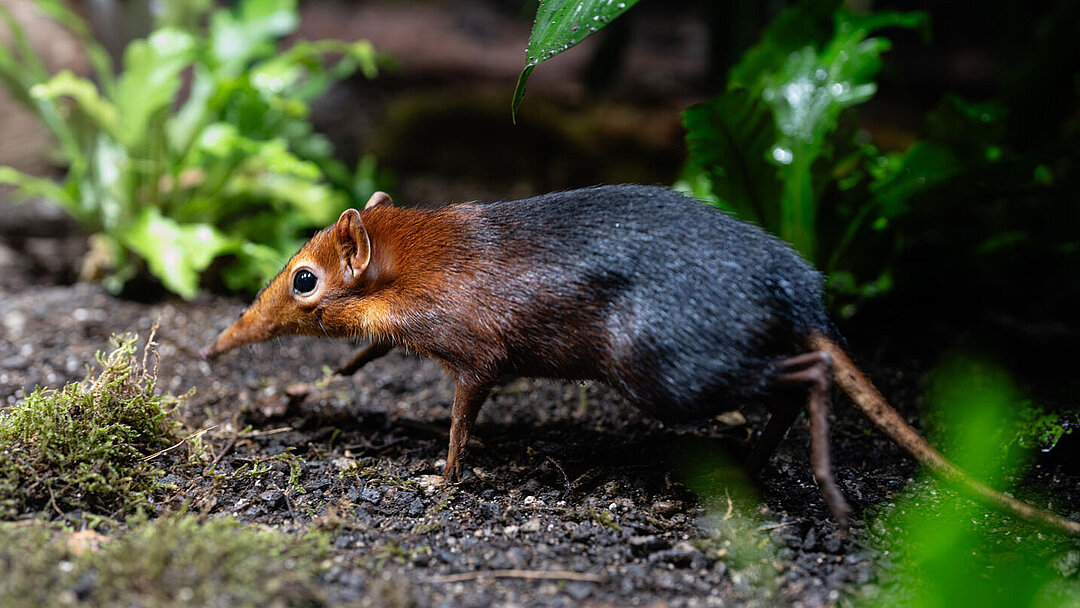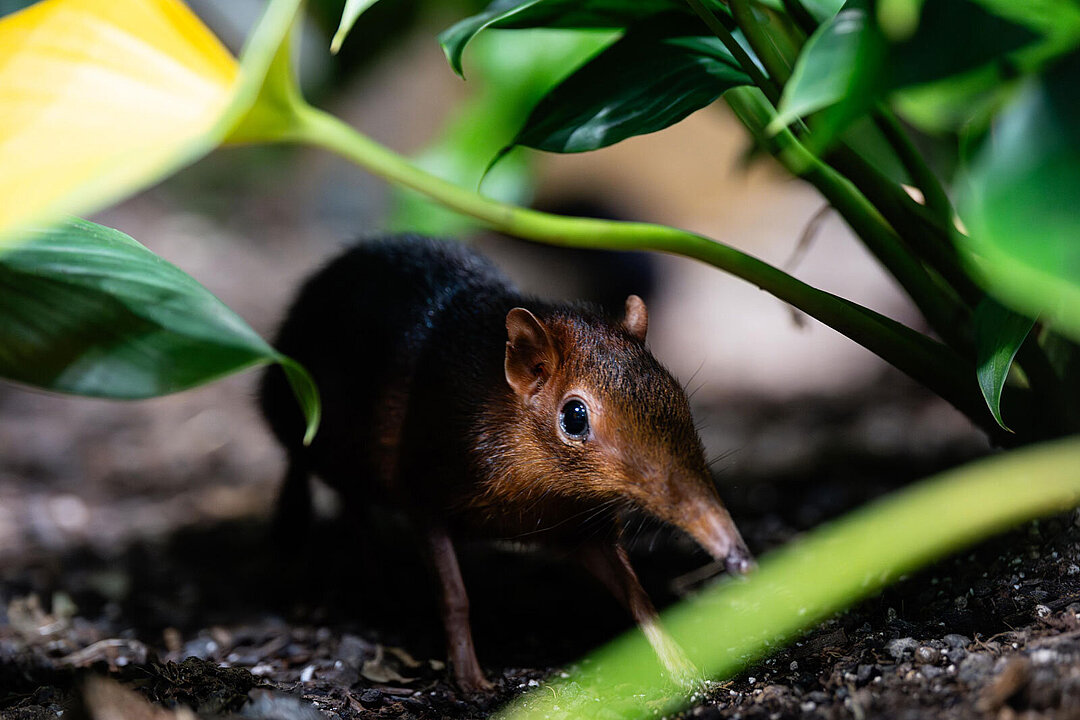
The newest residents of the Jungle Pavilion are a pair of small mammals with long proboscises and vibrant reddish-brown and black fur.
Brutus and Xantina, the male and female black and rufous elephant shrews, moved into the newly revamped facility last week and can now be seen by visitors darting around under the plant canopy. The species can only be found in five zoos in Germany. Hellabrunn is hoping the couple produce offspring. The arrival of the first residents since the revamp of the facility has generated a great deal of excitement at Hellabrunn. The newcomers have settled in well and complement the other residents of the Jungle Pavilion. Black and rufous elephant shrews are between 25 and 30 cm long (head-body length) and weigh around 480 to 600 g. Females are usually slightly smaller than their male counterparts. The animals have short, tricolour fur that covers the entire body. Their mouse-like tail, by contrast, is light in colour and has hardly any fur. Elephant shrews are distinguished by their long, thin, manoeuvrable snouts, which they use to rummage through leave litter in search of food.
Shy, diurnal, food-sniffing ground dwellers at Hellabrunn Zoo
For Lena Bockreiß, curator and registrar at Hellabrunn Zoo, the decision to care for black and rufous elephant shrews was easy: “Only four other zoos in Germany have this species. In all of Europe, there are only six other countries besides Germany that have this special animal in their population. The black and rufous elephant shrew lives in a rather narrow region in East Africa. Its natural habitat consists of lowland forests - deciduous and evergreen - and dense woodlands. Despite its cute looks, relatively little is known about the lifestyle of this shy species. It is widely believed that black and rufous elephant shrews live in monogamous pairs, but that couples only spend time together during the mating season,” says Bockreiß about the new residents at Hellabrunn.
Black and rufous elephant shrews are active during the day and live on the ground. Their diet consists of invertebrates and insects, which they lick up using their long, flexible tongues. They also eat eggs and small birds and mammals. Elephant shrews are shy and particularly skittish animals. They are very fast runners and can also jump quite high. They owe their impressive speed to their long legs: the hind legs are slightly longer than the front legs, with four toes on each foot. For a resting place and shelter, they build nests made from leaf litter on the ground.
Good neighbours to arrive in the Usambara Rainforest facility
The black and rufous elephant shrews from Leipzig Zoo are not the only newcomers planned for the new facility, according to zoo director Rasem Baban: “In the existing facility we have a rock mountain landscape, which inspired us to base our revamp on the Usambara Mountains. Not only is this design unique in the zoo world, it also allows us to grow the animal population in the facility. The Usambara Mountains is one of the most species-rich rainforests in the world and is also home to, among other species, the Kilimanjaro white-eye. Our goal is to make our guests aware of the need to protect this sensitive ecosystem with its unique biodiversity,” concludes Baban about potential neighbours that could also move into the new Usambara Mountains facility. In addition, the zoo director expresses his special thanks for the project: "We are very pleased with the generous support of the Horst Rohde Foundation, which played a decisive role in making the conversion of the Umsambara rainforest facility possible. The donor supports initiatives that serve animal, nature and environmental protection. With the Horst Rohde Foundation, we have a partner at our side whose support already demonstrated last year, using the example of the wolf facility, how positive and credible financial commitment in the area of species protection can be," says Rasem Baban about the cooperation with the foundation.
